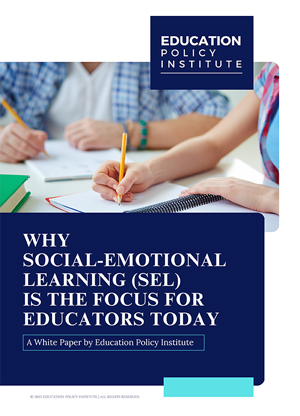Universities and college campuses are places where students live and study near each other. They are also various cultural spaces where students meet from different countries around the world. Recently, the foundations of this unique ecosystem have been impacted significantly by COVID-19, which has led to uncertainty regarding the implications for higher education.
Decrease in international student enrollment
Many international students’ plans to study abroad have been derailed as a result of the pandemic. With strict travel and visa restrictions in place by countries all over the world, international students face several barriers if they want to study in a foreign country.
Additionally, many popular study-abroad destinations such as the USA are still struggling to deal with the pandemic and have some of the highest infection rates in the world, which has significantly reduced their appeal to international students. Similarly, the American Council on Education predicts that overall international student enrollment for the next academic year will decline by as much as 25 percent in the U.S. alone. As the global situation of the pandemic shows little signs of improvement, international student enrollment is likely to decrease significantly, and colleges will miss out on the invaluable cultural experiences and perspectives that they bring to campus.
Financial loss for universities
Student tuition and fees make up 26 percent of revenues for four-year public institutions and 35 percent for four-year private non-profit institutions in the US, representing the largest share of revenues for almost all higher education institutions across the country. If student enrollment decreases even by a small margin, the revenue of higher institutions will also decrease, which is exactly what is happening.
As a result of the COVID-19 pandemic, numerous prospective and current college students’ families have been forced out of work and severely impacted their ability to pay for college tuition. Analysis by McKinsey predicts that there will be an overall enrollment decline of 20 percent across all undergraduates in all four-year higher education institutions in the United States. As a result of this unprecedented drop in student enrollment, McKinsey predicts that universities across the US will incur revenue losses of up to USD 19 billion from lost tuition and fee revenues alone.
Dilution of the “college experience”
For most students, going to college is a rite of passage and a transformational personal journey. It is once-in-a-lifetime experience where they gain independence and develop new social support systems. Students get to forge relationships and bonds in classrooms, engage in social activities, compete in sports, interact with faculty, meet mentors and so much more on campus. The switch to remote learning has caused this experience to be diluted for many students since learning at home on a laptop just isn’t the same as on-campus.
Various Moves for Beginning New Initiatives
COVID has had an unquestionable and unprecedented impact on higher education. The onus is now on colleges and universities to try to improve student learning, engagement, and experience while operating remotely. That way, they will be able to build trust and retain more students while attracting others, thus helping them increase revenue through higher student retention and engagement, and benefit students by providing them with a more beneficial learning experience. Whether students can return to campus for the fall term or remain remote for longer, these moves may inspire institutions to pilot new initiatives, learn what works, iterate, and position themselves to create capabilities that will enhance instruction:
-
Focus on access and equity
Moving from on-campus to remote learning raises issues related to access and equity. Colleges need to ensure that students have the basic technology they need to learn remotely. This can be done by offering stipends for internet and access and laptop rentals or purchases or offering loaned equipment and procuring additional laptops and hot spots for under-resourced students. For example, the University of Washington-Bothell has increased its equipment loan service and bought laptops and hot spots for students who need them. Universities can also work with state and local telephone service providers and agencies to advocate for government support to support distance learning for students.
Many universities have also taken the initiative to start providing mental health services on campus. Given the anxiety and distress caused by COVID-19, the need for these services has grown, and will continue to grow for students, faculty, and staff alike. With fewer people on campus, institutions need to scale up outreach and establish video options for mental health professions and provide access to online mindfulness classes and applications so that students can take care of their mental health and be more motivated for remote learning.
-
Support faculty
Most professors are working hard to ensure that their students receive the same standard of teaching as before, even as their own lives are disrupted. Institutions can help by empowering faculty in the following ways:
- Offer more teaching support: While most institutions already have centers that offer support to faculty in their teaching, they mostly follow a “wait until asked” approach. However, institutions now should scale up these services as much as possible and shift their orientation toward outreach, engagement, and sitting in to observe remote courses. This will enable institutions to play a more active role in monitoring the efficiency of remote learning courses and provide support to faculty if they feel they need it.
- Use social media and online forums to facilitate discussion between faculty members: Collaboration forums on social media can be very useful tools for professors to help them increase the effectiveness of their remote learning. Highlighting and explaining successful remote-teaching practices during faculty meetings or discussions can cultivate a sense of camaraderie and a culture of sharing and improving. This will enable faculty members to learn from each other and improve their remote learning methodologies, which will benefit both their students and the faculty themselves.
- Provide regular feedback to faculty on their remote teaching: When faculty members receive regular and consistent feedback from their students, they will be able to understand how they can improve their remote teaching practices. Feedback can be drawn from multiple sources such as student surveys and engagement data derived from the school’s learning management system.
-
Move student activities online
As mentioned earlier, the value of higher education for students transcends academic coursework. Students want to live the “college experience” and feel the vibrancy of campus life, from late-night dorm conversations to interacting in the dining hall and forming lifelong bonds with new people. As institutions move to remote learning, they can think about how to use existing tools to move in-person gatherings online and open up spaces for discussions, events, and other interests. By offering virtual spaces instead of physical ones, higher education institutions can enable their student community to continue to connect and engage with each other. Some examples of how this is as follows:
- Build virtual tutoring networks: Many college students are struggling to adapt to the challenges of remote education. Traditionally, they would have been able to get tutoring on-campus or in person but cannot anymore. Therefore, universities can help by building virtual tutoring networks that allow tutors to connect with students, so they can get access to the help they need.
- Creating virtual homerooms based on geography or affinity groups: Since college students come from such diverse geographies and cultures, many students look to bond with others who share similar backgrounds since it allows them to feel at home in such a large setting. The same goes with interests; students look to bond with others who share similar interests or affinities as them. Thus, universities can create virtual homerooms where students of similar geographies or affinity groups can communicate with each other to enable continued student engagement.
- Consult student leaders: To keep existing university organizations going, university leaders can consult student leaders to agree on common goals and priorities and to discuss what needs to happen in terms of technology access, learning, and engagement. Student groups play a huge role in bringing students together and campus and providing activities for them to do. Therefore, universities should work with the leaders of these groups to create spaces for established and new student groups to continue to operate remotely.





